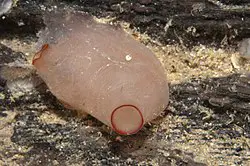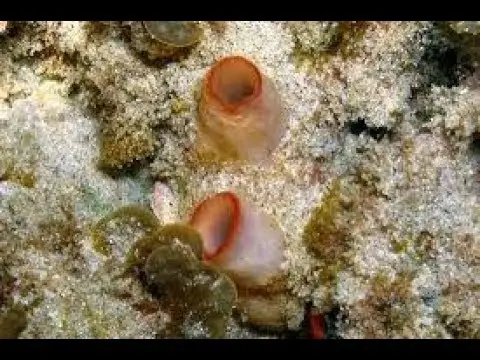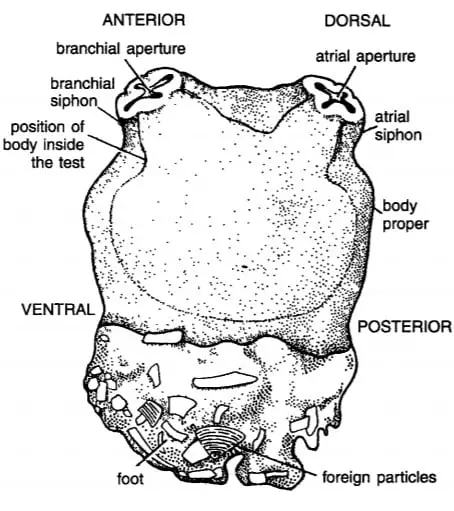Table of Contents
What is Herdmania:
They are marine sessile animals that live in all parts of the world, in coastal areas as well as in the deep ocean. Herdmania is a sea squirt also known as Ascidian they are members of subphylum Urochordata or Tunicata.
Systematic Position of Herdmania:
Herdmania is a genus under family pyuridae, under the order stolidobranchia, under the subclass pleurogona, under the class ascidiacea, under subphylum Tunicata or Urochordata.

Urochordata Meaning:
The term Urochordata refers to the position of the notochord in this subphylum, the notochord in this subphylum is not present throughout the length of the body. The term Urochordata is made of two words, uros and chorda. Uros refer to tail and Chorda represent notochord, notochord in subphylum Urochordata is limited to the tail region.
Ascidian Meaning:
The term Ascidian comes from a Greek word, ‘askidian’ which refers to the goat leather wine sac, Ascidian shows great resemblance with the wine sac in external appearance.
Tunicata Meaning:
The body of Herdmania is covered by a tunic or test which gives them a protective covering around them, for this reason, they are also known as Tunicata.
Sea Squirt Meaning:
In Herdmania two siphon-like structures are present when they get disturbed the two siphons eject a jet of water forcefully, for this behavior they are also known as sea squirts.
Herdmania Meaning:
Herdmania is given by local natives of Tamil Nadu because the animals look like a rounded weed so they call Herdmania by this name.
Geographical Distribution of Herdmania:
Herdmania live in almost all parts of the world but species present in abundance in a certain geographical area, for example, Herdmania mauritiana, Herdmania ennurensis, Herdmania pallida, Herdmania ceylonica are generally found in India.

Habits and Habitat of Herdmania:
Herdmania live in marine water in coastal areas as well as the deep ocean, live in solitary form, they remain in the seafloor attached with the different substratum. Their basal part of the expanded foot region is attached to the solid substratum like the sea stones at the bottom of the ocean.
They are found in both shallow coastal areas as well as the deep ocean, Herdmania pallida live in shallow coastal areas. They generally live in solitary form but sometimes some of them live together in the form of a group. Some of them form a symbiotic association with some Mollusca, like Turbinella pyrum.
In the symbiotic association with Mollusca, the Herdmania can migrate from one place to another remain attached over the Mollusca. The mollusc move from one place to another then the attached Herdmania also move with the mollusc and get exposure to more food and oxygen, in return the Herdmania give protection to the mollusc against different enemies.
Herdmania also forms a symbiotic association with diatoms, algae, sea anemones, and some crustaceans. Green algae grow in the outer tunic covering of the Herdmania and hide the Herdmania completely.

Herdmania creates a water current to collect food and oxygen, the seawater enters into the branchial aperture and after that, the undigested food, excretory material, carbon dioxide, gametes, and other unnecessary material goes outside through the atrial aperture.
In the water current, small microorganisms, diatoms, plankton are their food which presents in the seawater, they are ciliary feeders. When Herdmania gets disturbed they forcefully throw water jet outside through the branchial and atrial aperture and for this reason Herdmania is also known as a sea squirt.
Reproduction occurs through sexual reproduction, they are hermaphrodites. The gametes come outside the body through the atrial aperture and then fertilization occurs externally in seawater. The fertilized egg gives rise to free-swimming tadpole larva, so development is indirect in Herdmania. The tadpole larva undergoes retrogressive metamorphosis and forms adult Herdmania which is present in a sessile state on the seafloor.
Reference Habitat and Habits of Herdmania
Detailed Information on
Characteristics Features of Hemichordata
Hi Everyone!!! Welcome to Imaluop. Imaluop always try to learn some new and he want to share to other people. Here we will try to learn various topics on Science, specially on Biological Sciences.